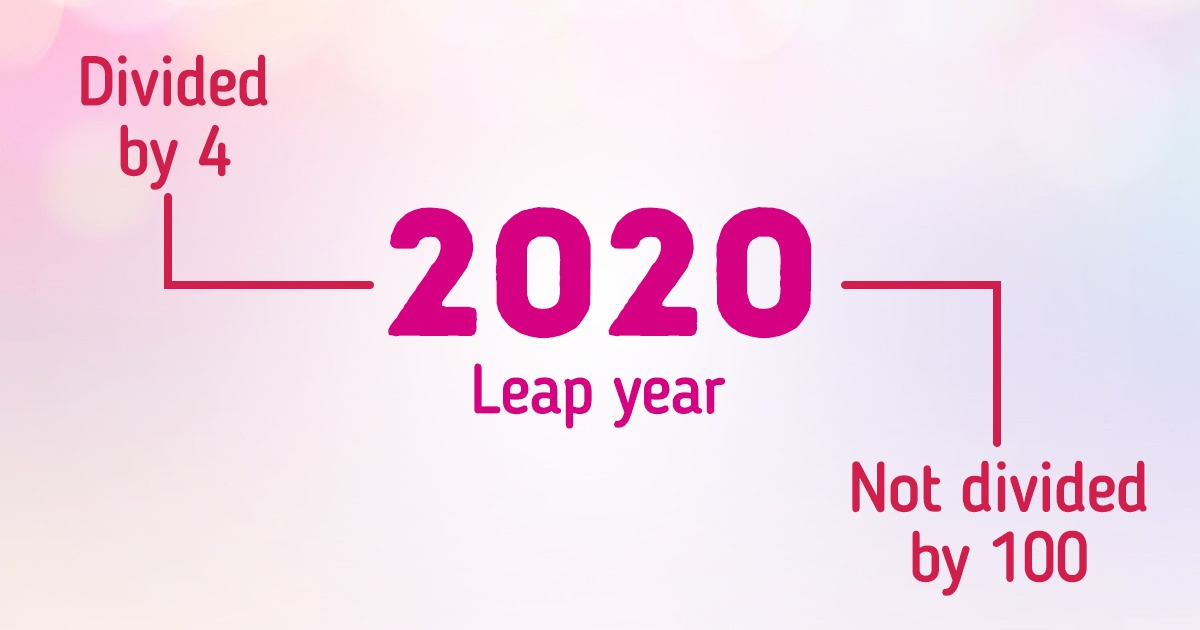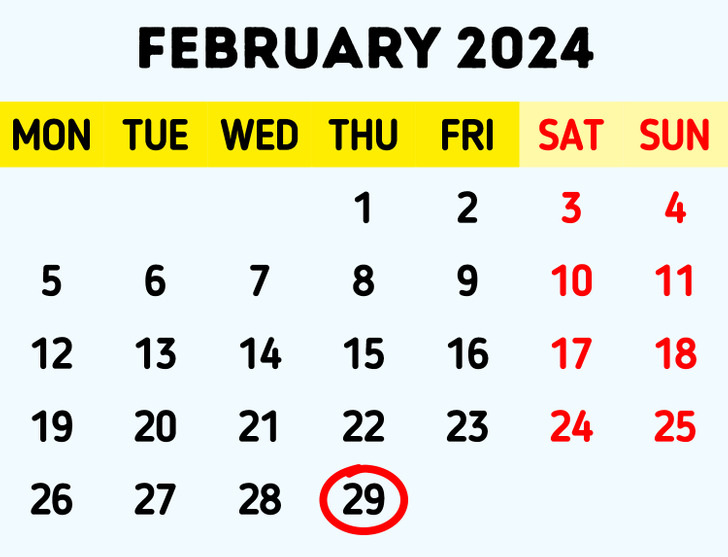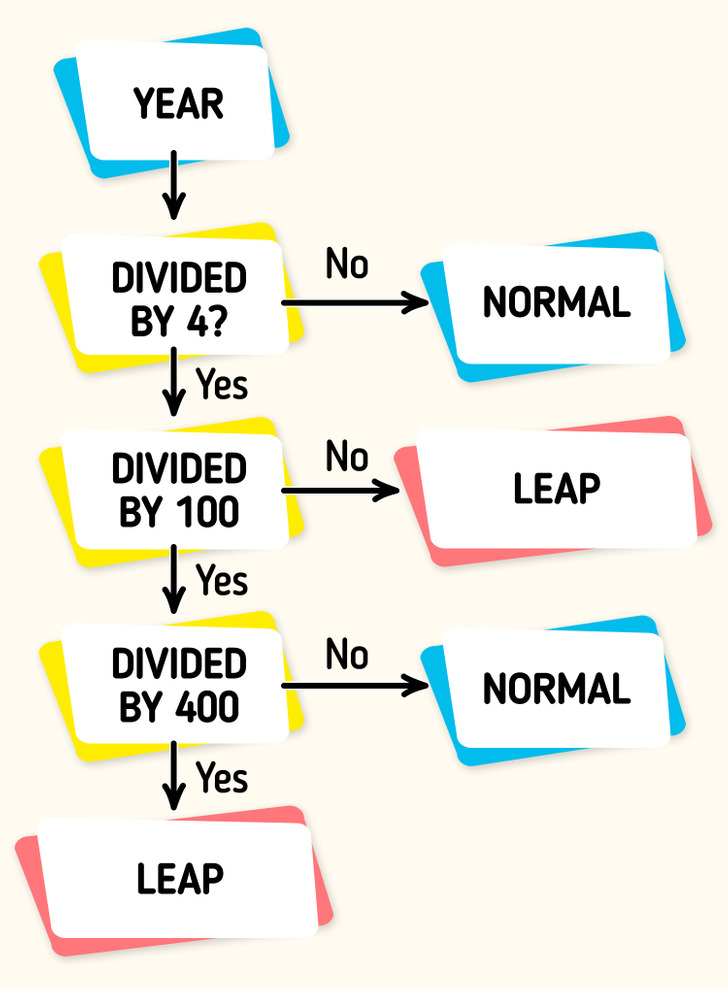What a Leap Year Is, and How to Calculate It

A leap year is a year that contains 1 extra day. It’s added to keep the calendar year synchronized with the real astronomical year, which actually lasts 365.242189 days. It’s called a tropical year. But the Gregorian calendar that we use only has 365 days. So it takes 4 years to make up the extra day we add to the leap year that lasts 366 days.
5-Minute Crafts is going to tell you about 2 ways of calculating a leap year.
1. Check the calendar.

The duration of a leap year is increased thanks to February. In a normal year, February has 28 days, and in a leap year, 29. So, in order to find out if a certain year is a leap year, find the calendar of the year and check February. If it has 29 days, it’s a leap year, and if it has only 28 days, it’s a normal year.
2. Use division.

As we said before, the difference between a normal year and the astronomical year is 0.242189 days. It’s a bit less than 6 hours. If it was exactly 6 hours, or 0.25 days, we’d just add an extra day every 4 years. But because it’s less than 6 hours, the rules are more complicated, which is why not every fourth year is a leap year, but only most of them are. It allows us to avoid a situation where tropical years would not catch up with calendar years.
The rules are:
- If the year isn’t divisible by 4, it’s a normal year.
- If it can be divided by 4 but not by 100, it’s a leap year.
- If it’s divisible by 4, 100, and 400, it’s a leap year.
- In all other cases, it’s a normal year.
Let’s check 2000, 2016, 2022, and 2100:
- 2000 is divisible by 4, 100, and 400. It’s a leap year.
- 2016 is divisible by 4 but not by 100. It’s a leap year.
- 2022 isn’t divisible by 4. It’s a normal year.
- 2100 is divisible by 4 and 100, but not by 400. It’s a normal year.